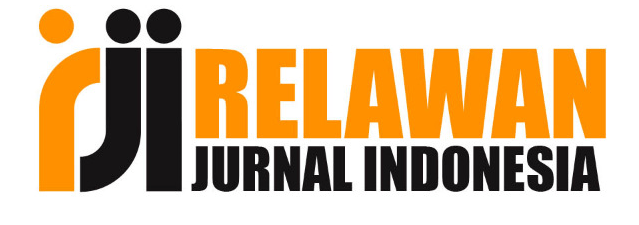A STUDY OF MALE AND FEMALE REFUSAL STRATEGY PERFORMED BY EMPLOYEES OF BCD TRAVEL INDONESIA
Abstract
The objectives of this research are to analyze what refusal strategies performed by male and female employees of BCD Travel Indonesia and to identify the language features found in refusal strategies of male and female employees. The qualitative method, specifically using a case study is used in this research. The primary data source of this study was taken from a written document namely Discourse Completion Test (DCT) proposed by Beebe and friends (1990) with little modification. Questionnaires to collect the data, specifically the Discourse Completion Test (DCT) as the instrument are applied in this research. The findings show that from 132 utterances of male employees, 80 utterances are indirect strategy, 28 utterances are adjuncts, and 24 utterances are direct strategy. These results show that male and female employees have their own ways of delivering indirect refusal strategy. In the utterances of male and female employee’s refusal strategies, 5 of 10 language features, such as lexical hedges or fillers, intensifiers, ‘superpolite’ forms, avoidance of strong swear words and emphatic stress are investigated.
Keywords : Refusal strategies, language features, male and female employees
References
Austin, J. . (1962). How to do things with words. Oxford University Press.
Bardovi-Harlig, K. (1996). Pragmatics and language teaching: bringing pragmatics and pedagogy together. ERIC, 7, 21–39.
Beebe, L. M., Takahashi, T., & Uliss-Weltz, R. (1990). Pragmatic transfer in ESL refusals (R. C. Scarcella, E. S. Andersen, & S. D. Krashen (eds.)). Newbury House Publishers.
Brasdefer, J. C. F. (2008). Politeness in Mexico and the United States: a contrastive study of the realization and perception of refusals (A. H. Jucker (ed.)). John Benjamin Publishing Company.
Brown, P., & Levinson, S. C. (1987). Politeness: some universals in language usage. Cambridge University Press.
Cameron, D. (1992). Feminism and linguistic theory (Second). Palgrave.
Coates, J. (1996). Woman talk: conversation between woman friends. Oxford Blackwell.
Coulmas, F. (2005). Sociolinguistics: the study of speakers’ choice. Cambridge University Press.
Creswell, J. W. (2002). Research design: qualitative, quantitative, and mix methods approaches. SAGE Publications.
Finegan, E. (2007). Language: its structure and use (Fifth). Thomson Wadsworth.
Gass, S. M., & Houck, N. (1999). Interlanguage refusals: a cross cultural study of Japanese-English. Mouton de Gruyter.
Gray, J. (1993). Men are from Mars, Women are from Venus: a practical guide for improving communication and getting what you want in your relationships. HarperCollins.
Hana, H. E. F. (2012). Hedges in movie dialogues in English: theoretical and practical aspects. The Journal for Languages and Literatures of the Faculty of Philosophy in Novi Sad, II.
Holmes, J. (1993). An introduction to sociolinguistics, fourth edition (G. Leech & M. Short (eds.); Vol. 77, Issue 3). Routledge. https://doi.org/10.2307/329116
Kothari, C. R. (2004). Research methodology: methods and techniques. New Age International (P) Ltd.,Publishers.
Kreidler, C. W. (1998). Introducing English semantics, second edition. In Introducing English Semantics, Second Edition. Routledge. https://doi.org/10.4324/9781315886428
Kurath, H. (1939). Handbook of the linguistic geography of New England. American Council of Learned Societies.
Lakoff, R. T. (1975). Language and women’s place. Harper & Row Publisher.
Leech, G. N. (1989). Principles of pragmatics. In Computation of Language. Longman Group Limited. https://doi.org/10.1007/978-3-642-74564-5_12
Levinson, S. C. (1996). Pragmatics. Oxford University Press.
Liu, H., & Qian, M. (2018). A study on gender differences in speech act of refusal of Chinese college students. 7th International Conference on Education and Management (ICEM 2017), 53(Icem 2017), 289–298. https://doi.org/10.2991/icem-17.2018.61
Mills, S. (2008). Language and sexism. Cambridge University Press.
Neuman, W. L. (1997). Social research methods: qualitative and quantitative approaches. Allyn and Bacon.
Paltridge, B. (2012). Discourse anlysis: an introduction (second). Bloomsbury Academic.
Parks, J. B., & Roberton, M. A. (1998). Contemporary arguments against non sexist language: Blaubergs (1980) revisited. Plenum Publishing Corporation.
Rose, K. R., & Kasper, G. (2001). Pragmatics in language teaching. Cambridge University Press.
Searle, J. R. (1970). Speech acts: an essay in the philosophy of language. Cambridge University Press.
Sumarsono, & Pranata, P. (2002). Sosiolinguistik. SABDA.
Tuncer, H., & Turhan, B. (2019). Refusal strategies of Turkish pre-service teachers of English: A focus on gender and status of the interlocutor*. Journal of Language and Linguistic Studies, 15(1), 1–19. https://doi.org/10.17263/jlls.547578
Wardhaugh, R. (2005). An introduction to sociolinguistics. In Religion (Fifth). Blackwell Publishing. https://doi.org/10.1353/lan.2003.0268
Yule, G. (1996). Pragmatics. Oxford University Press.
Copyright (c) 2022 Yunia Pramadita Putri, Mangantar Sitohang

This work is licensed under a Creative Commons Attribution-NonCommercial-ShareAlike 4.0 International License.
Retained Rights/Terms and Conditions of Publication
1. As an author you (or your employer r institution) may do the following:
*make copies (print or electronic) of the article for your own personal
*Every accepted manuscript should be accompanied by "Copyright Transfer Agreemen" prior to the article publication.









